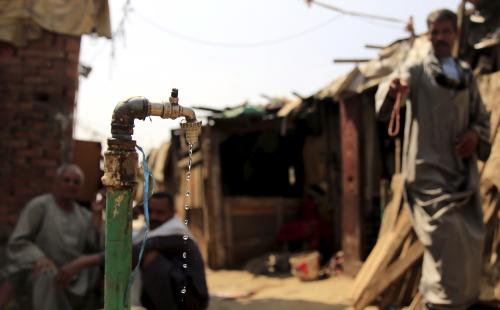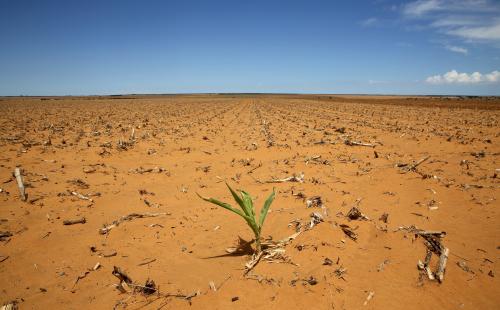Devastating Cyclone Idai hits Southeast Africa
On March 15, Cyclone Idai made landfall in the southeast African nations of Mozambique, Zimbabwe, Malawi, and Madagascar, with winds up to 100 miles per hour and a storm surge topping 20 feet. Heavy rains accompanied the storm and continued for several days after the cyclone according to the Mozambique National Meteorology Institute forecast.
In particular, the port city of Beira in Mozambique suffered tremendously. The cyclone caused the Buzi River and the Pungue River, whose mouths are situated in the Beira area, to flood their banks. The U.N. satellite agency says floodwaters covered over 2,165 square kilometers (835 square miles).
So far, estimates suggest the cyclone has claimed more than 200 lives in Mozambique, 139 in Zimbabwe, and 56 in Malawi, officials said. The death toll however is expected to continue rising. Mozambique’s President Filipe Nyusi stated the death toll could eventually climb to over 1,000. Hundreds of thousands have been left homeless due to the cyclone, still waiting for aid and relief. The U.N. World Food Program (WFP), which is coordinating food aid/emergency assistance, said as many as 1.7 million people in Mozambique would need food aid in the next three months.
“There is so much water around [and] the risk of waterborne diseases is obviously very high,” said WFP’s spokesperson Gerald Bourke in an interview with NPR. World Health Organization Regional Director for Africa Dr. Matshidiso Moeti said, “The displacement of large numbers of people and the flooding triggered by Cyclone Idai significantly increases the risk of malaria, typhoid and cholera,”
World Bank and African Development Bank commit $47 billion to African climate finance
Last week, at the One Planet Summit in Nairobi, Kenya, the World Bank and African Development Bank (AfDB) collectively pledged $47 billion by 2025 to assist African countries in coping with climate change. The summit brought together leaders from around the world—including Kenyan President Uhuru Kenyatta and French President Emmanuel Macron—to reaffirm their commitments to the fight against climate change and build momentum ahead of the U.N. Secretary-General’s 2019 Climate Summit in September.
The World Bank committed to providing $22.5 billion for climate adaptation and mitigation between 2021 and 2025, while the AfDB committed $25 billion between 2020 and 2025 for renewable energy projects like solar power plants. Part of the AfDB’s funding pledge will go toward a new facility called the Green Baseload to provide loans to support reliable and affordable renewable energy. The AfDB also announced that it is on track to meet its commitment to allocate 40 percent of its funding to climate finance by 2020, progressing from 9 percent in 2016, 28 percent in 2017, and 32 percent in 2018.
According to the United Nations Economic Commission for Africa, the region contributes only 4 percent of the world’s total global greenhouse gas emissions, but more than 65 percent of its population is directly impacted by climate change. Regarding this pressing issue, the World Bank Group Interim President Kristalina Georgieva wrote in a press release, “This region is particularly vulnerable to increasing floods, droughts and destructive storms. We have to do more and do it faster, or millions of people could be plunged into poverty.” In a statement at the One Planet Summit, AfDB President Akinwumi Adesina said, “It is not good enough to simply ask countries to stay away from polluting technologies. We have to be proactive in exploring alternatives. We will therefore be launching the ‘green baseload’ facility under the Sustainable Energy Fund for Africa (SEFA 2.0) to provide concessional finance and technical assistance to support the penetration and scale-up of renewable energy, to provide affordable and reliable renewable energy baseload.”
South Africa facing extended period of power shortages
On Tuesday, South Africa’s Minister for Public Enterprises Pravin Gordhan announced that there was no quick fix for the ongoing round of load-shedding being undertaken by Eskom, South Africa’s national power company. Eskom is expected to provide more details on a recovery plan in 10 to 14 days as it continues to assess the problem. Load shedding is being undertaken to balance the power supply and demand on South Africa’s grid, leading to rolling blackouts. This week, Eskom has scaled up its load shedding to 4,000 megawatts as unplanned outages at power plants increased and South Africa lost 900 megawatts of power imports from Mozambique due to Cyclone Idai. Overall, 17,000 megawatts of power generation capacity are currently unavailable to the company because of planned maintenance and unplanned outages.
The high likelihood of an extended period of load shedding is expected to dampen economic growth. According to analysis by Goldman Sachs, first-quarter GDP growth could be lower by 0.3 percentage points and similarly severe cuts further through 2019 could take 0.9 percentage points off 2019 growth.






Commentary
Africa in the news: Cyclone Idai, $47 billion for climate finance, and power shortages in South Africa
March 23, 2019